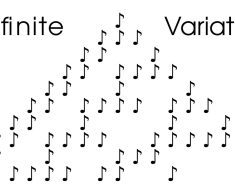When it comes to cancer, the predictive capabilities of artificial intelligence (AI) machine learning may help health care clinicians to make more targeted treatment decisions based on more precise data for better patient outcomes. Researchers at the Perelman School of Medicine at the University of Pennsylvania have developed an AI tool called iStar that can automatically spot tumors and various types of cancer that are difficult for clinicians to see or identify, as well as predict candidates for immunotherapy.
The AI tool performs functions that a human pathologist would perform. Pathologists are medical doctors who analyze tissue biopsies, fluid samples, or organs to diagnose and treat diseases.
According to the researchers, iStar generates spatial transcriptomics (ST) data with near single-cell resolution for the entire transcriptome. Spatial transcriptomics provides positional data, the first step in gene expression called transcription for intact cells or tissues. Transcription happens when a gene’s DNA sequence is transcribed (copied) to produce a new molecule of RNA.
Histology, a subset of biology, is the study of the microscopic anatomy of cells and tissues. Typically, this involves examining thin sections of samples that have been stained under a microscope. The AI tool iStar (Inferring Super-resolution Tissue Architecture) first extracts features from histology images to predict super-resolution gene expression based on the histology features. Based on the resulting gene expression information, the tissue is segmented.
The histology feature extractor is a self-supervised learning (SSL) deep learning algorithm where the AI model is pre-trained on unlabeled data to generate data labels. The team used an AI hierarchical vision transformer (HViT) that was pretrained on public histology image datasets using self-supervised learning.
In preparing data for the histology feature extractor, histology images were resized to the same resolution. Whole images were partitioned in a hierarchical manner where high-level large image tiles show global tissue structures and smaller low-level image tiles show fine-grained cellular tissue structures. Features were extracted from fine-grained and global tissues structures. Gene expressions are predicted from the features processed by an AI feed-forward neural network that was trained through weekly supervised learning.
“A key step of iStar is to leverage the high-resolution histology image obtained from the same ST tissue section to reconstruct the unobserved super-resolution gene expression,” the researchers wrote.
The researchers assessed iStar using healthy tissue data and cancer datasets for breast (including HER2-positive), prostate, colorectal, and kidney cancers.
Additionally, the team showed that their AI system was able to successfully detect immune cell clusters called tertiary lymphoid structures (TLS), a potential predictive biomarker for immunotherapy candidates for solid tumors. In most types of solid tumors, the presence of TLS has been associated with favorable responses to immunotherapy and outcomes.
“Through the analysis of several datasets across multiple cancer types and healthy tissues, we have demonstrated that the super-resolution gene expressions predicted by iStar are accurate,” wrote lead authors Daiwei Zhang and Mingyao Li, in collaboration with co-authors Amelia Schroeder, Hanying Yan, Haochen Yang, Jian Hu, Michelle Lee, Kyung Cho, Katalin Susztak, George Xu, Michael Feldman, Edward Lee, Emma Furth, and Linghua Wang.
The interdisciplinary combination of artificial intelligence machine learning, genomics, imaging, and biology provide clinicians with timely and actionable insights for immunotherapy and precision oncology in the critical pursuit of positive patient outcomes.
Copyright © 2024 Cami Rosso All rights reserved.




